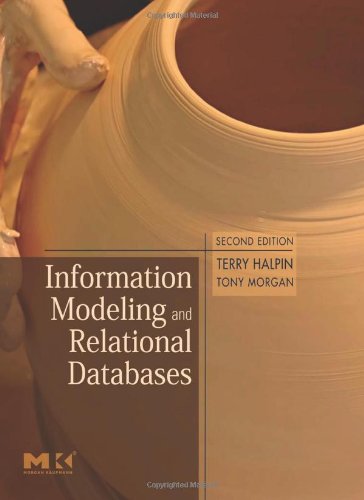Information Modeling and Relational Databases, Second Edition pdf download
Par rocha jamie le lundi, juin 12 2017, 03:31 - Lien permanent
Information Modeling and Relational Databases, Second Edition. Terry Halpin, Tony Morgan

Information.Modeling.and.Relational.Databases.Second.Edition.pdf
ISBN: 0123735688,9780123735683 | 976 pages | 25 Mb

Information Modeling and Relational Databases, Second Edition Terry Halpin, Tony Morgan
Publisher: Morgan Kaufmann
Information Modeling and Relational Databases, Second EditionNew E-BookInformation Modeling and Relational Databases, Second Edition. Whether you need to write database applications, perform administrative tasks, or generate reports, Learning SQL, Second Edition, will help you easily master all the SQL fundamentals. For publicity contact information check out our Press Room. By remodeling the data according to the FRBR model, and expanding the RDF graph with data returned by WorldCat's FRBRization web service, we are able to greatly increase the number of entry points to each book. Because I've been reporting on NoSQL events recently, I was invited to interview the book's authors, Michael Dirolf and Kristina Chodorow of 10gen, the company that makes the open source MongoDB. Database systems and database design technology have undergone significant evolution in recent years. If you were using a relational database. For instance, in a classic social networking application, you would probably put all information about your users in one document and all your information about their postings in another. We make the Basing the social data service on RDF would thus make it possible to integrate data from many different sources, such as relational databases, XML documents and web services, and make these available in a seamless way. Pre-publication (RoughCut) version. Information Modeling and Relational Databases, Second Edition (The Morgan Kaufmann Series in Data Management Systems) buy cheap online. Now current Database Design better taxsoftwarecomparison.net find! The relational data model and relational database systems dominate business applications; in turn, they are extended by other technologies like data warehousing, OLAP, and data mining.